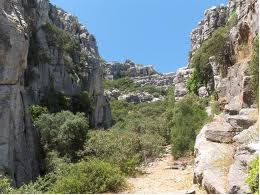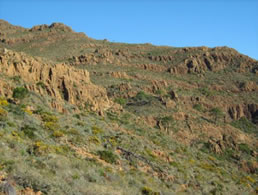Ronda Weather
|
 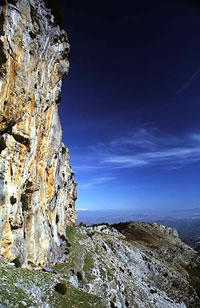 The Natural Park Sierra de las Nieves has an extension of 20.162 ha and contains regions, which belong to the municipal territories of the villages El Burgo, Istán, Monda, Parauta, Ronda, Tolox and Yunquera - all towns situated in the province of Malaga. It was declared Natural Park in 1989. The territory is very mountainous with profound gorges and spectacular ravines of more than 100 metres depth like the one called “La Caína”. The Natural Park Sierra de las Nieves has an extension of 20.162 ha and contains regions, which belong to the municipal territories of the villages El Burgo, Istán, Monda, Parauta, Ronda, Tolox and Yunquera - all towns situated in the province of Malaga. It was declared Natural Park in 1989. The territory is very mountainous with profound gorges and spectacular ravines of more than 100 metres depth like the one called “La Caína”.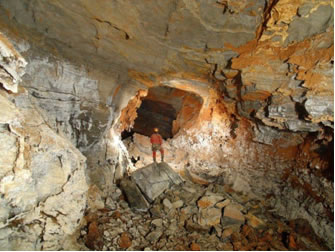 The mountaineers will find in this park the highest summit of the province of Malaga. It is called “Torrecilla” and has an altitude of 1.919 metres. Also the caving enthusiasts have a lot to see. Due to the calcareous soil the water erosion produces a lot of natural wells and caves like the famous GESM, the third deepest, explored cave in the world, with more than 1.100 metres depth. The mountaineers will find in this park the highest summit of the province of Malaga. It is called “Torrecilla” and has an altitude of 1.919 metres. Also the caving enthusiasts have a lot to see. Due to the calcareous soil the water erosion produces a lot of natural wells and caves like the famous GESM, the third deepest, explored cave in the world, with more than 1.100 metres depth.A very important element of the Natural Park Sierra de las Nieves is the water, which is actually omnipresent. For the hiking and tracking fans we recommend following one of the most significant rivers of the park, the river “Rio Verde”. It offers impressive landscapes and the possibility to do some “aquatic hiking” – really delicious during the summer months. If you are interested in geology you will be enthusiastic about the whimsical karst formations and the “peridotitas” – the peridot with the mineral olivine, which is a magnesium iron silicate and causes the reddish colour of the lower landscapes. It is a much more impermeable rock than the higher situated limestone, but has a special composition, which favors the appearance of a very interesting flora and which might be as well interesting for lovers of the flora.
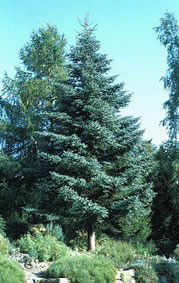 This Natural Park hosts as well one of the most important botanical treasures of Andalusia. We are talking about the biggest forest of Pinsapo trees (Abies Pinsapo) of the world. This tree is an endemic species of the South of the Spanish Peninsular, existing only in the high parts of the mountain ranges “Sierra de las Nieves”, “Reales de Sierra Bermeja” and “Sierra de Grazalema”. It was discovered by the Swiss botanic Boissier in 1837 after he was guided to the trees by Mr. Haenseler and Prolongo from Malaga. This botanic relic is a living fossil, surviving since the last glacial period. The so called “pinsapares” (forests of pinsapo trees) are covering nowadays in total around 3500 ha, of which nearly 3000 ha are situated in the Natural Park and the Biosphere Reserve Sierra de las Nieves. This means you will be able to see in this park around 85% of the total quantity existing worldwide. In the north of Morocco exist another subspecies (Abies Pinsapo, variety marrocana), which is the nearest relative of our Pinsapo. This Natural Park hosts as well one of the most important botanical treasures of Andalusia. We are talking about the biggest forest of Pinsapo trees (Abies Pinsapo) of the world. This tree is an endemic species of the South of the Spanish Peninsular, existing only in the high parts of the mountain ranges “Sierra de las Nieves”, “Reales de Sierra Bermeja” and “Sierra de Grazalema”. It was discovered by the Swiss botanic Boissier in 1837 after he was guided to the trees by Mr. Haenseler and Prolongo from Malaga. This botanic relic is a living fossil, surviving since the last glacial period. The so called “pinsapares” (forests of pinsapo trees) are covering nowadays in total around 3500 ha, of which nearly 3000 ha are situated in the Natural Park and the Biosphere Reserve Sierra de las Nieves. This means you will be able to see in this park around 85% of the total quantity existing worldwide. In the north of Morocco exist another subspecies (Abies Pinsapo, variety marrocana), which is the nearest relative of our Pinsapo.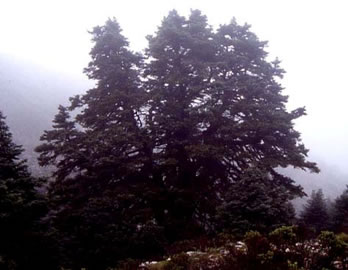 One of the real treasures of the Sierra de las Nieves is situated just 5 km from the rural house “Los Quejigales”. It is the pinsapo tree “Las Escaleretas”, which stays out for its more than 5 metres of diameter and 26 metres height. It is between 350 and 500 years old, which makes it the oldest pinsapo tree in the Park. It was registered and declared “Natural Monument” by the Government of Andalusia. The other representative tree is the so called alpine Portuguese Oak (Quercus faginea variety alpestris), present in the Natural Park above 1.700 metres until approximately 1.800 metres of altitude with an extension of 10km2. 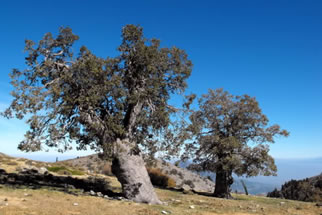 The lower parts of the mountains are covered by Aleppo Pines (Pinus halepensis), Maritime Pines (Pinus pinaster) and the so called Scots Pine (Pinus sylvestris), as well as cork oaks (Quercus suber) and holm oaks (Quercus ilex) - depending on the existing type of soil. There exist a big quantity of endemisms like the Daffodil of the Subbéticas (Narcisus buguei), the Betic Belladonna (Atropa baetica), or the so called “Zapaticos de la Virgen” (Sarcocapnos baetica) among others. The lower parts of the mountains are covered by Aleppo Pines (Pinus halepensis), Maritime Pines (Pinus pinaster) and the so called Scots Pine (Pinus sylvestris), as well as cork oaks (Quercus suber) and holm oaks (Quercus ilex) - depending on the existing type of soil. There exist a big quantity of endemisms like the Daffodil of the Subbéticas (Narcisus buguei), the Betic Belladonna (Atropa baetica), or the so called “Zapaticos de la Virgen” (Sarcocapnos baetica) among others.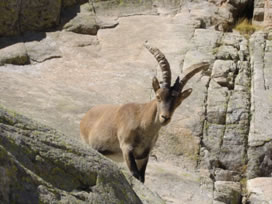
Regarding the fauna surely the so called Cabra Montés (Capra pirenaica hispanica), the local species of the ibex, is the most outstanding animal, which is quite easy to observe in the higher parts of the mountains. Although nowadays there are more than thousand counted animals, which means one of the biggest populations in whole Andalusia, this species was at the very edge of being extinguished, when in 1950 only 30 animals were left. It was recovered step by step from this small nucleus, due to a very strict protection and is now distributed in practically all mountain ranges in the province of Malaga. Together with the Pinsapo tree the Cabra Montés is considered the emblem of the Natural Park. Together with the roe deer it is the only autochthonous species, which might be hunted. In order to be able to offer more variety to the hunters the mouflon and the fallow-deer were introduced in these mountains. 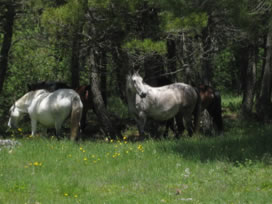 Near the rural house Los Quejigales exist as well a herd of horses, which are living there feral since years and are constantly increasing their population. Near the rural house Los Quejigales exist as well a herd of horses, which are living there feral since years and are constantly increasing their population.Other important mammals are – a part from the wild boar – the mountain cat, the common genet and the otter as well as the salamander in representation of the amphibians. 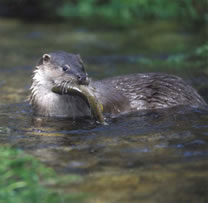 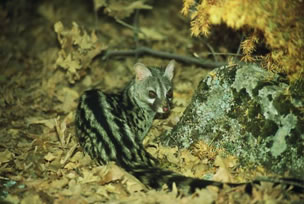
The species of birds are innumerable and we have to point out the presence of raptors as the Eagle-owl and the Golden Eagle, which are each day more difficult to find and which still decorates our sky with their majestic wings. In Tolox exists the recovery centre “Pecho de Venus”, dedicated to cure protected animals and especially birds. OTHER TYPES OF PROTECTION Apart from being declared Natural Park, the surroundings are as well protected by other types of regulations, laws and forms of protections.
OTHER PROTECTED AREAS NEARBY
If you are passionate about nature and think you know it, come and we will surprise you. Visit us and feel yourself a part of the Sierra de las Nieves, staying in the rural house Cortijo Los Quejigales. |
|||||||||||||||||||||||||||||||||||||||||||||||||||


